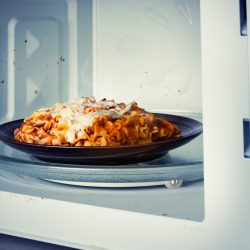Lasagna is a dish loved by people all over the world. But what happens if you leave your lasagna dish out overnight? Is it still safe to eat? Let's take a look at how to approach this situation.
The USDA says that food left out at room temperature for more than two hours should be thrown out. However, this time frame decreases to one hour if the temperature is above 90 degrees Fahrenheit. Bacteria grow rapidly in these conditions, and eating food that bacteria have contaminated can make you very sick.
When it comes to food, stick to the rule of thumb of when in doubt, throw it out. In this article, we will take a closer look at the risks of eating lasagna that has been left out overnight. In addition, we will answer other questions about lasagna and how to properly store it, so keep reading!

Is It Safe To Eat Lasagna That Has Been Left Out Overnight?
Lasagna is a dish made of alternating layers of pasta, sauce, and cheese. It is popular in many countries, and the recipe has many variations. The dish is often baked in the oven, and leftovers can be stored in the fridge for up to four days.
However, leaving your lasagna dish out on the counter overnight means that it may no longer be safe to eat. The USDA says that food that has been left out at room temperature for more than two hours between 40-140 degrees Fahrenheit should be thrown out.
This time frame decreases to one hour if the temperature is above 90 degrees Fahrenheit, as bacteria grow rapidly in these conditions.
Eating food that bacteria have contaminated can make you very sick, so it is best to err on the side of caution and throw out your lasagna if it has been left out overnight.
This is especially true if the lasagna wasn't covered, as it has a higher chance of being exposed to bacteria. Nonetheless, you can risk eating it if it is covered and you feel lucky, but it's not worth getting sick.
If you can't come to terms with throwing your lasagna out and it was covered when it was left out, then smell it before eating it. If it has a sour smell, then don't risk it; throw it out.
You can also check the lasagna for any signs of mold, as this is another indication that it has gone bad.
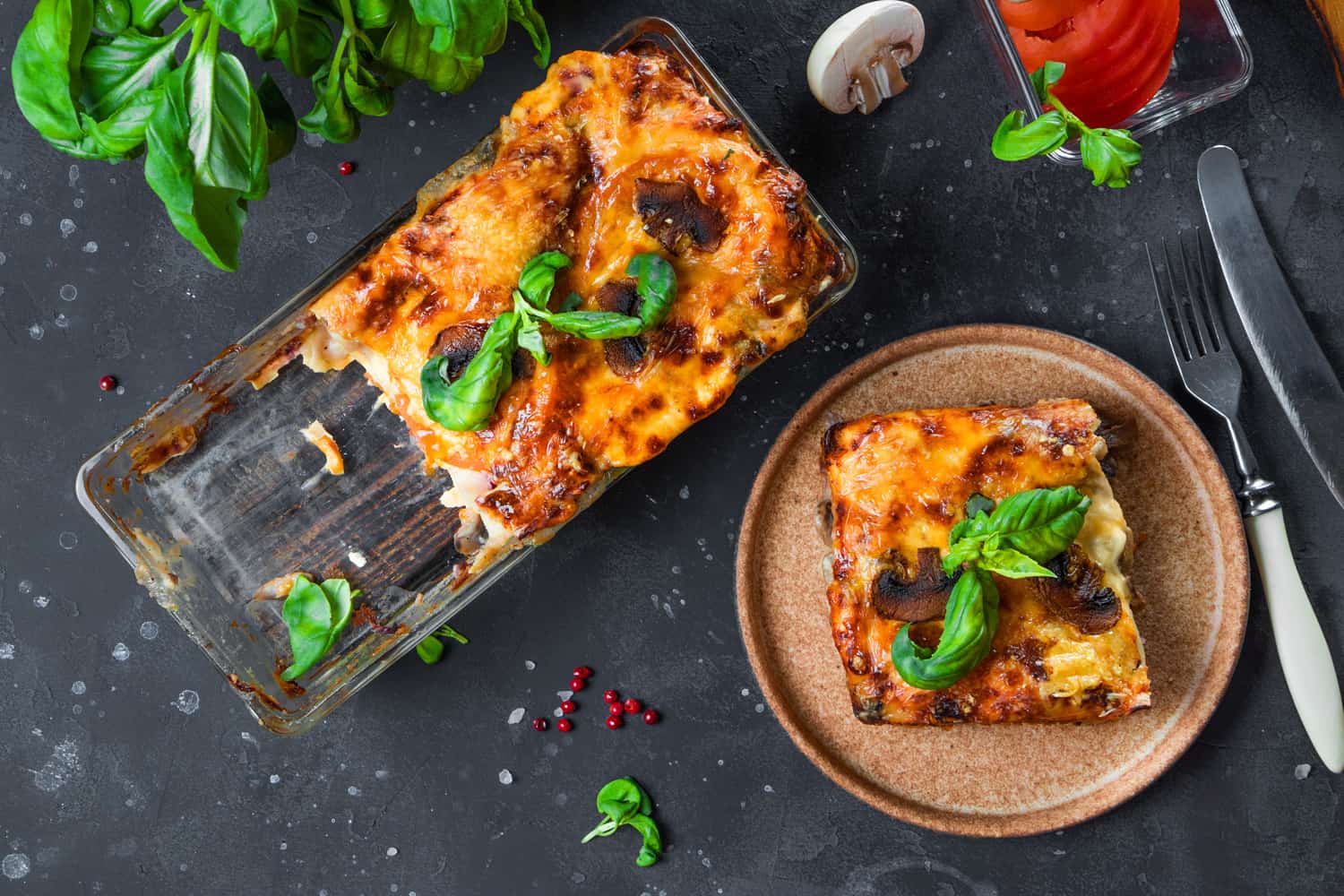
Can You Save Lasagna That Has Been Left Out Overnight?
Unfortunately, once bacteria have contaminated your lasagna, there is no way to save it. You may be able to cook the bacteria out of the dish, but this does not guarantee that you will not get sick from eating it.
If you check the lasagna and it contains no foul smell, discoloration, or mold, then you can cook it at a high temperature for a longer period to kill the bacteria. However, keep in mind that this is risky and won't guarantee that you or your family members won't get sick.
How Long Is Lasagna Good In The Fridge?
If you have stored your lasagna in the fridge, it is still safe to eat up to 5-7 days after it was made. After this time frame, the quality of the dish will start to decline, and it may no longer be safe to eat.
To extend the shelf life of your lasagna, make sure to store it in an airtight container or wrap it tightly with cling film. This will prevent the dish from drying out and developing mold.
If the lasagna isn't properly wrapped, then it may only be good for 3-5 days. It is good to check your lasagna after 3 days to check for any signs of mold or bad smells.
You can also freeze your lasagna to extend its shelf life. Properly sealed lasagna can last 6-8 months in the freezer. Thaw the dish in the fridge overnight and then reheat it before serving when you're ready to eat it.
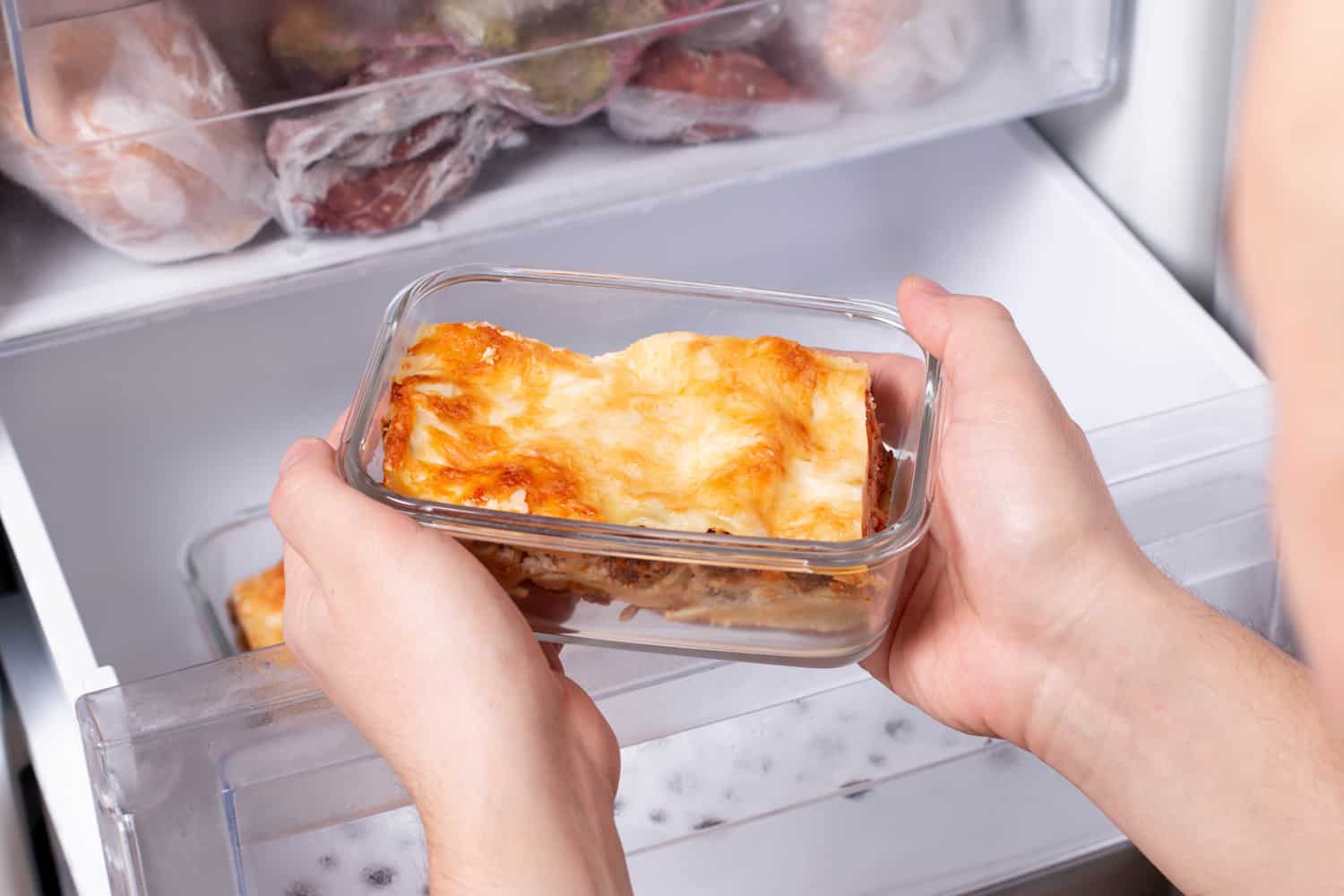
Is It Safe To Eat Lasagna Cold?
If your lasagna has been cooked and stored properly, it is safe to eat cold. However, some people may not enjoy the texture of the dish when it is cold.
If you're not a fan of eating lasagna cold, you can reheat it in the oven, microwave, or toaster oven. You don't have to overheat your lasagna if it is properly stored.
Bacteria can't grow at cold temperatures, so it is safe to eat cold or warm lasagna as long as it has been refrigerated.
Can You Get Food Poisoning From Lasagna?
If you put the ground burger in your lasagna and it isn't cooked properly, you can get food poisoning from consuming it.
Ground beef has more surface area than steak, so it can contain bacteria on the inside of the meat. For example, a steak has bacteria cooked from its surface when it hits the grill. Ground beef, on the other hand, is mixed together, and bacteria from the surface of the meat can stay on the inside.
When making lasagna, ensure that you cook the ground beef properly before adding it to the dish. You can do this by using a meat thermometer and cooking it until the internal temperature is 165 degrees Fahrenheit.
What Are The Symptoms Of Food Poisoning From Lasagna?
The symptoms of food poisoning can vary depending on the type of bacteria that has contaminated your dish. However, some common symptoms include:
- vomiting
- diarrhea
- nausea
- abdominal pain
- stomach cramps
- fever
- chills
If you experience any of these symptoms after eating lasagna, it is important to see a doctor as soon as possible.
At What Internal Temperature Is Lasagna Safe To Eat?
To kill any bacteria that may be present in your lasagna, you need to cook it until it reaches an internal temperature of 165 degrees Fahrenheit.
You can check the internal temperature of your lasagna with a meat thermometer. Insert it into the center of the dish and make sure that the needle isn't touching the bottom of the pan.
It is important that your beef is precooked before adding it to your lasagna. Never add raw or undercooked meat to your dish, as this can increase your risk of food poisoning.
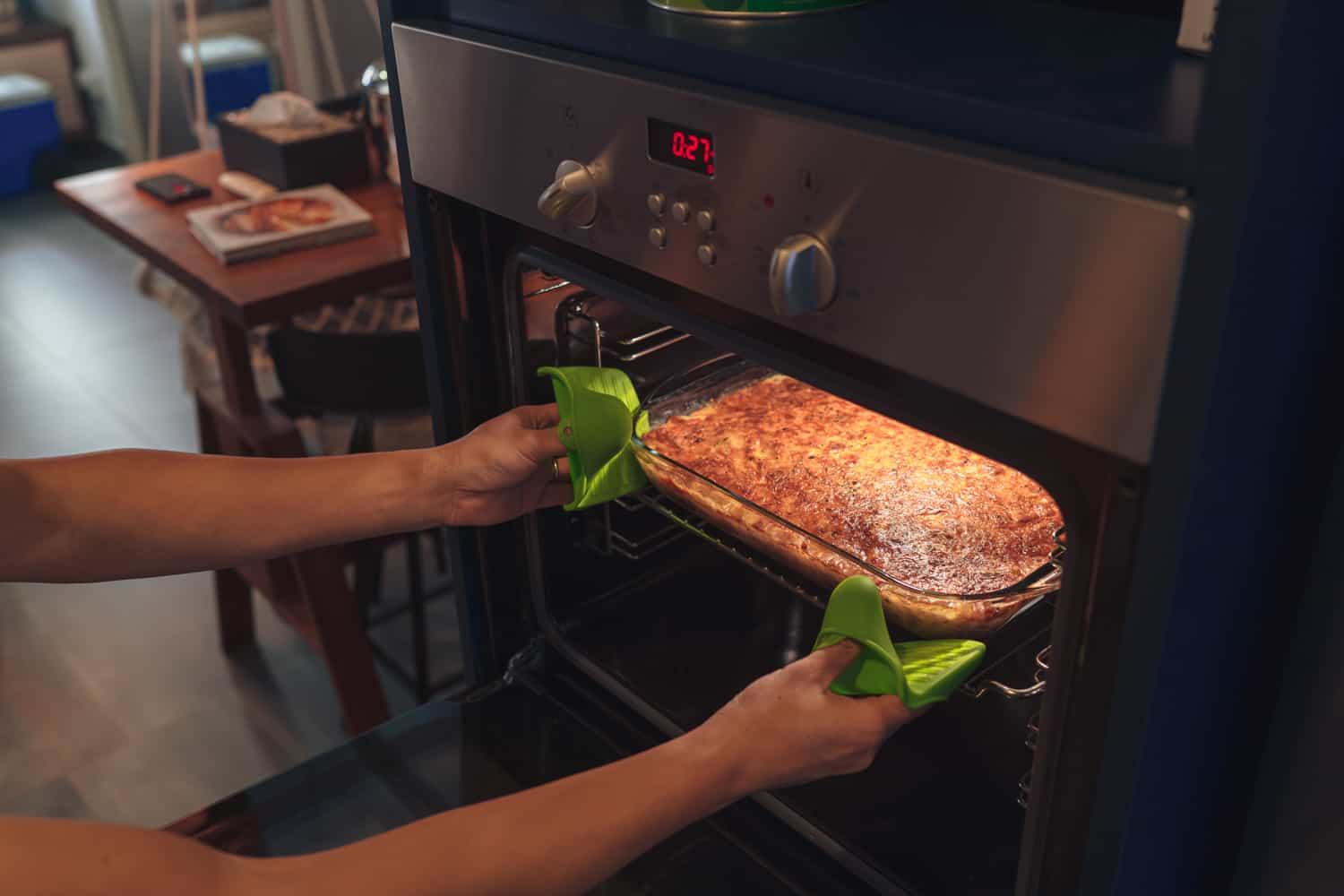
How Can You Prevent Food Poisoning From Lasagna?
There are several steps that you can take to prevent food poisoning from lasagna:
- First, wash your hands thoroughly with soap and water before handling any food.
- Second, make sure that all of your ingredients, especially meat, are cooked properly before adding them to the dish.
- Avoid cross-contamination by keeping raw meat separate from other food items.
- Third, store your lasagna properly in an airtight container or wrap it tightly with cling film.
- Fourth, refrigerate your lasagna as soon as it is cooled to prevent bacteria from growing.
- Finally, freeze your lasagna if you want to extend its shelf life.
Following these tips will help to ensure that your lasagna is safe to eat and free of contaminants.
Should You Let Lasagna Cool Before Refrigerating It?
Yes, you should always let lasagna cool before refrigerating it. Refrigerating hot food can raise the temperature of the fridge and create an environment that is conducive to bacteria growth, and this can put other foods at risk.
It is best to wait until your lasagna has cooled to room temperature before wrapping it tightly with cling film or placing it in an airtight container.
Also, the reason you want your lasagna to be cool before putting it in the fridge is to avoid condensation from forming. The condensation will ruin the texture of your lasagna!
Sometimes the reason we forget to store our food in the fridge is that we were waiting for it to cool. In this case, set a timer for yourself so that you don't forget. You can also place your lasagna in a cooler with ice packs to speed up the cooling process.
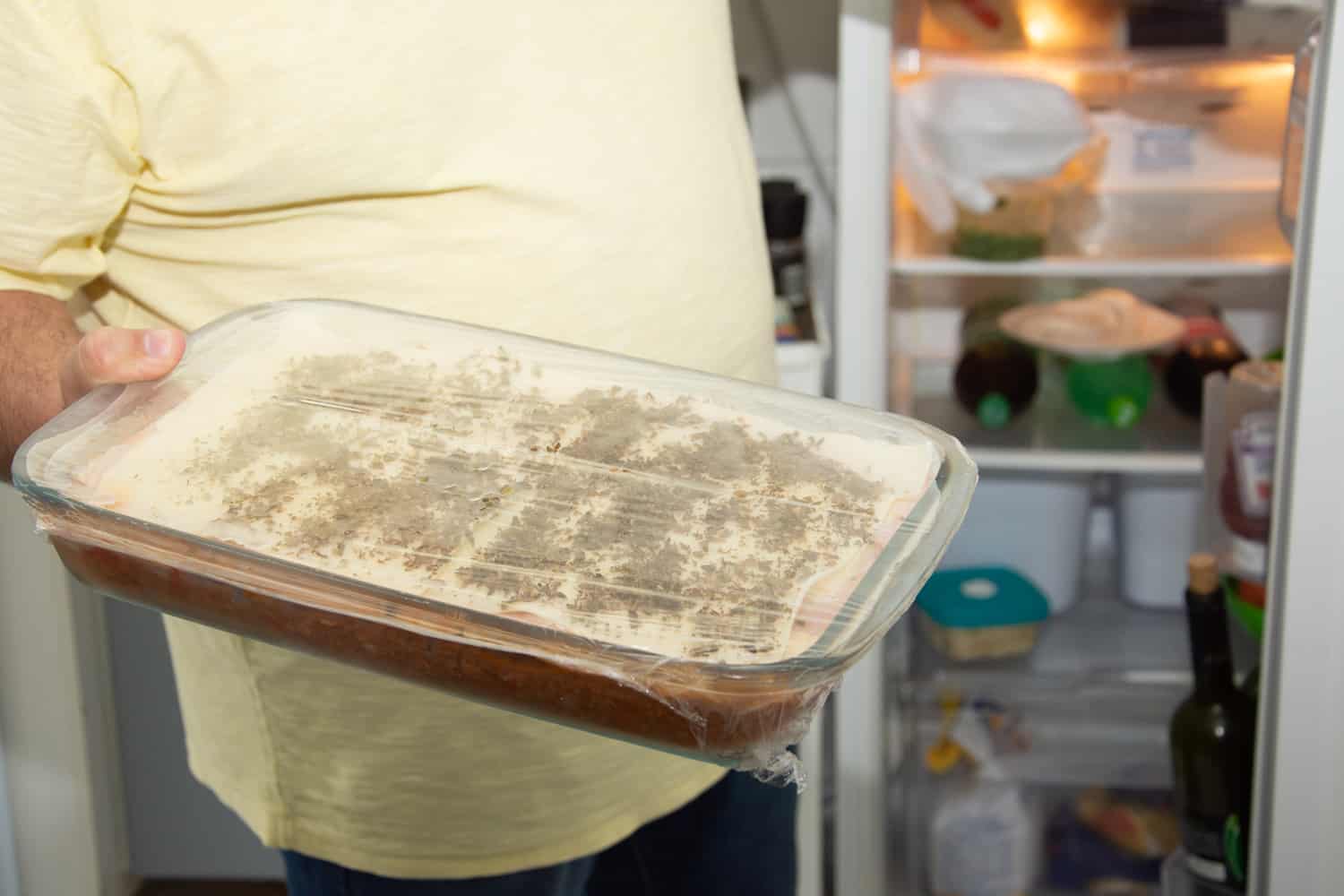
Final Thoughts
Lasagna is a delicious and hearty dish that the whole family can enjoy. However, it is important to take care when handling and storing the dish to prevent food poisoning. If you make a mistake and leave your lasagna out overnight, it is better to throw it away than risk getting sick.
Make sure to cook all ingredients thoroughly, wash your hands often, and store your lasagna properly to avoid any contamination. If you experience any symptoms of food poisoning after eating lasagna, seek medical attention immediately.
Want more articles on lasagna? Here are others you may like:
How To Store Cooked Lasagna Noodles Overnight
Should You Cover Lasagna With Foil When Baking It?
How Long Should You Cook Lasagna? [Including The Pasta Noodles & Time In Oven]


